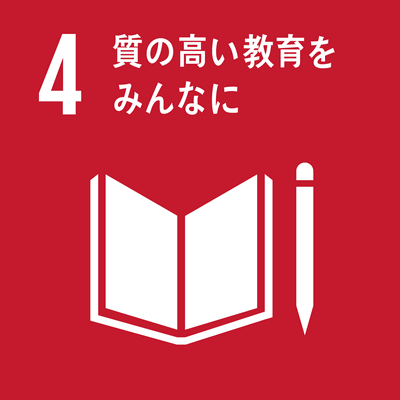シラバス表示
シラバスの詳細な内容を表示します。
→ 閉じる(シラバスの一覧にもどる)
科目の基本情報
| 開講年度 | 2021 年度 | |
|---|---|---|
| 開講区分 | 生物資源学研究科(博士後期課程)資源循環学専攻 | |
| 受講対象学生 |
大学院(博士課程・博士後期課程) : 1年次, 2年次, 3年次 |
|
| 選択・必修 | 選択 |
|
| 授業科目名 | 資源植物生態生理学 | |
| しげんしょくぶつせいたいせいりがく | ||
| Ecophysiology of Economic Plants | ||
| 単位数 | 2 単位 | |
| ナンバリングコード | BIOR-Reso-7591-004
|
|
| 開放科目 | 非開放科目 | |
| 開講学期 |
後期 |
|
| 開講時間 |
|
|
| 授業形態 |
オンライン授業 * 状況により変更される可能性があるので定期的に確認して下さい
「オンライン授業」・・・オンライン会議ツール等を利用して実施する同時双方向型の授業 |
|
| 開講場所 | ||
| 担当教員 | 関谷 信人 | |
| SEKIYA, Nobuhito | ||
| 実務経験のある教員 | Japan International Cooperation Agency (JICA) technical expert in Tanzania Japan Overseas Cooperation Volunteers (JOCV, JICA volunteer) in Zambia and Tanzania |
|
| SDGsの目標 |
|
|
| 連絡事項 | * 状況により変更される可能性があるので定期的に確認して下さい |
|
学修の目的と方法
| 授業の概要 | This is a course designed to allow students to learn plant physiological ecology. Each student is required to review literatures relevant to one specific topic in plant physiological ecology chosen by himself/herself and aurally present the review result to the class. |
|---|---|
| 学修の目的 | Each student becomes able to improve his/her own study by reflecting knowledge and skills gained in this course. |
| 学修の到達目標 | -Each student gains the latest knowledge of plant physiological ecology. -Each student learns what is a logically sound summary. -Each student learns what is an effective aural presentation. |
| ディプロマ・ポリシー |
|
| 成績評価方法と基準 | Abstract (Summary): 40%,Presentation: 40%,Discussion: 20% |
| 授業の方法 | 講義 演習 |
| 授業の特徴 |
問題自己設定型PBL 反転授業 Moodleを活用する授業 その他、能動的要素を加えた授業(ミニッツペーパー、シャトルカードなど) 教員と学生、学生相互のやり取りが、ほぼ英語で進められる授業 |
| 授業改善の工夫 | |
| 教科書 | |
| 参考書 | |
| オフィスアワー | 13:00~18:00(Online:10:00~24:00) |
| 受講要件 | |
| 予め履修が望ましい科目 | |
| 発展科目 | |
| その他 |
授業計画
| MoodleのコースURL |
|---|
| キーワード | |
|---|---|
| Key Word(s) | |
| 学修内容 | Each student reviews the literatures relevant to Plant Physiological Ecology and aurally presents the summary in English using the Microsoft Power Point Software. The audience discuss the presentation. 1. Orientation 2. Reading a prepared article(1) 3. Reading a prepared article(2) 4. Preparation of aural presentation about the prepared article(1) 5. Preparation of aural presentation about the prepared article(2) 6. Presentation of the prepared article(1) 7. Presentation of the prepared article(2) 8. Searching for an article 9. Reading the found article(1) 10. Reading the found article(2) 11. Preparation of aural presentation about the found article(1) 12. Preparation of aural presentation about the found article(2) 13. Preparation of aural presentation about the found article(3) 14. Presentation of the found article(1) 15. Presentation of the found article(2) |
| 事前・事後学修の内容 | 1. pre (1hr): Reading orientation documents post(3hrs): Reading a prepared article 2~3. pre (4hrs): Reading a prepared article post (4hrs): Reading a prepared article 4~5. pre (4hrs): Preparation of aural presentation about the prepared article post (4hrs): Preparation of aural presentation about the prepared article 6~7. pre (4hrs): Preparation of aural presentation about the prepared article post (4hrs): Reviewing aural presentation about the prepared article 8. pre (2hrs): Searching for an article post (2hrs): Searching for an article 9~10. pre (4hrs): Reading the found article post (4hrs): Reading the found article 11~13. pre (4hrs): Preparation of aural presentation about the found article post (4hrs): Preparation of aural presentation about the found articlet 14~15. pre (4hrs): Preparation of aural presentation about the found article post (4hrs): Reviewing aural presentation about the found article |
| 事前学修の時間:180分/回 事後学修の時間:180分/回 |



